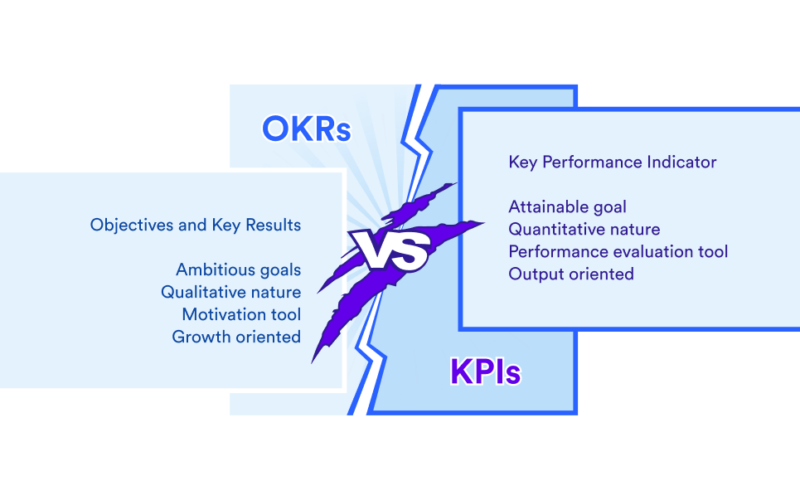Table of Contents
Performance management is an integral part of any business. It helps to measure the progress and success of a company by analyzing key performance indicators (KPIs). However, in recent years there has been a shift towards using Objectives and Key Results (OKR) over KPIs as they offer more flexibility and granularity when it comes to tracking performance.
The idea that OKRs are replacing KPIs is becoming increasingly popular among businesses. This may well be due to their ability to provide meaningful insights into employee performance, help align team members with organizational goals, and ensure that everyone is on the same page. In this article, we will explore why OKRs are becoming more popular than KPIs in modern-day performance management.
Greater Focus on One Metric at a Time
Unlike KPIs, which often focus on one metric or area of performance at a time, OKRs go beyond that and provide a comprehensive view of an employee’s progress.
They are broken down into objectives (what you want to achieve) and key results (how you plan to measure it). This allows for more granular tracking of employee performance and progress, as well as a more detailed look at the goals and strategies being used to reach those objectives.
It is considered an effective approach to always have that overview of what is happening in respect of all our goals. This is particularly so when one objective can so closely affect another. Then the more objectives we have, the more useful OKR is going to be to us.
More Accountability
OKRs also provide a greater sense of accountability by tying an individual’s performance to company-wide goals and objectives.
By providing employees with a clear view of how their performance affects the entire organization, OKRs can help to ensure that everyone is working together towards a common outcome. This in turn helps to increase motivation, collaboration, and engagement across the board.
Every employee should know how what they do affects the company as a whole. With individual goals being measured this means that each staff member can be more aware of their impact. This in turn contributes to greater efficiency at every stage of a mission to achieve the company goals.
Improved Transparency and Visibility
Finally, OKRs provide better transparency and visibility into employee performance. By providing regular updates on progress, managers have a better understanding of how employees are performing, in addition to what strategies are working or not. This helps to increase efficiency and productivity and identify areas for improvement.
The easier it is for us to see where we are currently, and so how much still needs to be achieved, the better from every manager’s perspective. It is picking a good performance management system and the right software that will ensure this.
Many are opting for OKR and the accompanying software necessary to run such a system so that they have this clear direction for everyone. This will not only improve employee performance but also morale when everyone appreciates clear instructions and goals. That is, to have things made as clear as possible to always know whether or not a good job is being done.
Conclusion
Overall, OKRs provide businesses with a more comprehensive and detailed view of performance than KPIs can offer. With its ability to track progress in greater detail, motivate employees, and provide visibility into performance, it’s no wonder why OKRs are becoming more popular in modern performance management.
At the end of the day, choosing to use OKR over KPI ultimately comes down to what works best for your organization and its goals. However, with their comprehensive approach and ability to provide meaningful insights into employee performance, it’s clear that OKRs have become the preferred option for many businesses.

